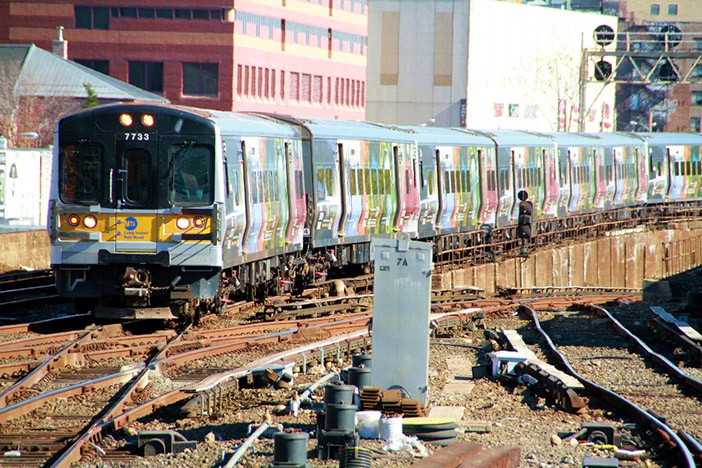Photo Courtesy of MTA Long Island Rail Road/John Spoltore
The LIRR carried 89.3 million customers in 2016 – the highest ridership since 1949.
By Michael V. Cusenza
The Long Island Rail Road is seeing record ridership numbers – carrying 89.3 million customers in 2016, a 1.9-percent increase over last year and the highest ridership since 1949, the Metropolitan Transportation Authority announced this week.
According to MTA officials, LIRR’s growth continues recent trends in which the railroad has registered a 1.97 percent average growth per year over the past five years. And ridership has grown 10.2 percent over the same five years, from 81 million in 2011.
Underlying economic and demographic trends portend ridership growth continuing into the future, officials noted, as a generation now entering the workforce shows a greater reliance on the railroad than older generations. A detailed demographic and travel analysis of LIRR customers shows the beginnings of a reverse-travel market segment that the MTA expects would be expanded if Gov. Cuomo’s proposed Main Line Expansion project – expanding the Main Line from two tracks to three between Floral Park and Hicksville, as the LIRR is building a second track from Farmingdale to Ronkonkoma – is built as expected.
“Our data reinforces what we’ve seen elsewhere that millennials are more likely to opt for the railroad as matter of choice, and to embrace a lifestyle built around downtown activities and living than previous generations,” said William Wheeler, director, MTA Planning. “We know that habits that are developed early in one’s adult life tend to stick with them through their entire working lives. So the trend bodes well as a long-term positive for LIRR ridership.”
According to the MTA, the survey of LIRR customers found that for weekday travel via LIRR, 65 percent of trips were made to Manhattan for work; 14 percent were for westbound work-travel elsewhere; 9 percent were for non-work travel to Manhattan; and 11 percent were for eastbound travel for work or non-work.
“These results will be very valuable to the railroad as we make decisions regarding service planning, capital program expenditures and marketing in the years ahead,” said LIRR President Patrick Nowakowski. “There is an intrinsic demand for reverse-peak travel to the Island that today is very difficult for the LIRR to accommodate as a two-track railroad. This data shows that if and when the Main Line is expanded to a third track, our reverse-commute service would fill an immediate unmet need.”

